Description of the best varieties of clematis and characteristics of varieties
Multi-flowered plants are loved by all summer residents. Clematis blooms for a long time, the bushes are simply covered with buds, a delicate aroma is an addition to the beauty. Arbors and walls are decorated with clematis; of all the vines, it has taken root best in our flower beds. Consider the main varieties and types of clematis in order to know what to choose for your site.
Content
- 1 Botanical description of the species diversity of clematis
- 2 Varieties of vines, depending on the place of flower formation
- 3 Herbaceous, shrubs and shrubs
- 4 How clematis are distinguished by flower size
- 5 Color variety of clematis varieties
- 6 Shade-tolerant varieties of clematis
- 7 Clematis varieties blooming all summer
Botanical description of the species diversity of clematis
Clematis are perennial plants that belong to the genus clematis (as they are often called) of the buttercup family. Among the species are evergreen and deciduous.
Most of the clematis are vines, clinging to the support with leaf stalks. There are species with erect stems, in which the leaves are not able to grasp the support. In most species, the shoots are herbaceous, and die off for the winter, in others - young woody shoots, and remain for the winter.
The flowers do not have petals, the tepals (sepals) are painted in different colors. Large-flowered species and varieties of clematis are distinguished; division is also carried out according to the color of sepals. Another characteristic of the species is the point of seed germination - aboveground, intermediate and underground.
The place of bud formation is an important species characteristic, we will tell about it separately. The classification is also carried out according to the flowering time - at a late date, clematis delights the eye until late autumn.
Important: many clematis show remarkable winter hardiness, which allows them to be grown in any region.

Varieties of vines, depending on the place of flower formation
The place of bud formation and flowering is one of the main characteristics of the varieties. It defines the rules for pruning a bush so that the plant will please with abundant flowering. Clematis are divided into 3 groups on this basis.
Flowers on the shoots of both the past and the current (I group)
The group includes varieties that bloom on overwintered shoots. When the young growth gains strength, buds appear on it. The first bloom is June, the second is August-September.
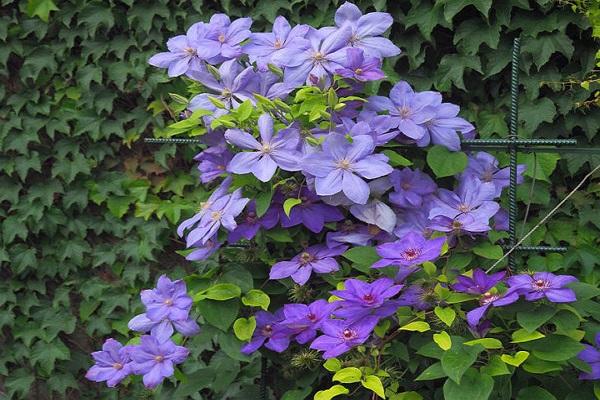
Clematis the Woolly
Clematis Woolly blooms twice a season, depending on where the buds are formed. The flowers are large (up to 20 centimeters) and strongly open, the shoots are thin and delicate. Wool varieties do not tolerate frost well. The color of the petals is light, from blue to pink.
Representatives - Lawsoniana, Hybrida Sieboldii.
Clematis Sprawling
Also called Patens. The length of the vine reaches 3.5 meters. Flowers are usually solitary, varied in color - from white to deep blue. The shape is often star-shaped, sometimes double.
The most beautiful - Joan Pikton, Multi Blue.
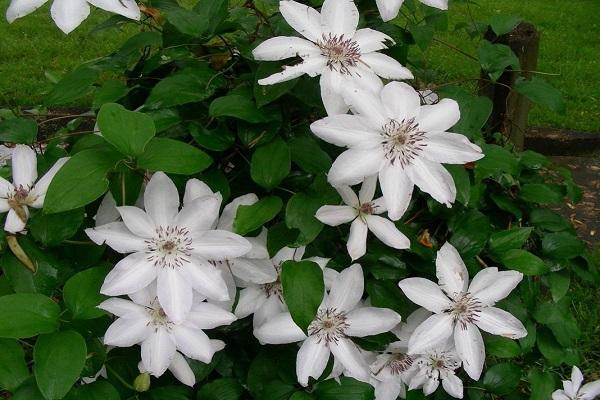
Flowers on shoots of the current year (II group)
This group blooms only on young shoots of the current year.
Clematis Jacques
Interspecific hybrid. The stalk of Zhakman's clematis grows up to 4-5 meters. They are distinguished by abundant flowering from July to September. The flowers are strongly open, the sepals are smooth, sometimes layering on top of each other. The color is bright, the predominant colors are bluish-violet. The petals sometimes have streaks, tone changes, strokes.
Most varieties of Jacqueman grow well in Russia. The most famous are Gypsy Queen, Lilac Star, Hagley Hybrid.
Clematis Viticella
Shrub vines growing up to 3-4 meters. Flowers in this group are open or drooping. The predominant colors are pink, purple, red. Bloom on young shoots from May.
The best - Madame Grange, Ville de Lyon, Forest Opera.
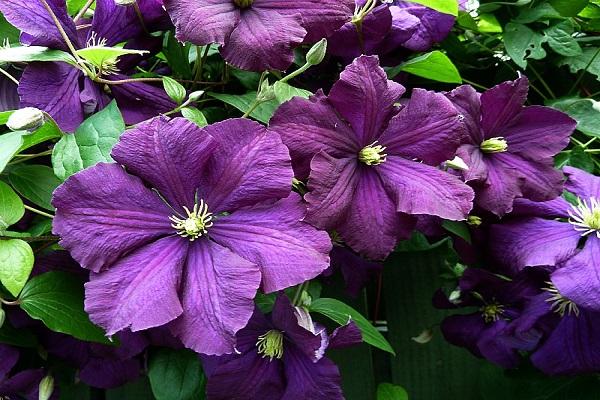
Whole leaf clematis
In nature, it grows on the slopes of hills, near water. The stems are erect and reddish. The flowers are similar in appearance to bells, the heads are lowered, they do not differ in large size (6 centimeters). Varieties - Clematis Duran, Memory of the Heart.
Flowers on shoots last year (group III)
Abundant friendly flowering is observed on overwintered shoots of clematis.
Clematis Alpina
Alpine varieties are distinguished by a long stem (up to 3 meters) and a love of semi-shaded areas. Flowers - wide, half-open bells. Coloring - pink, purple, white.
Varieties - Albina Plena, Pamela Jackman.
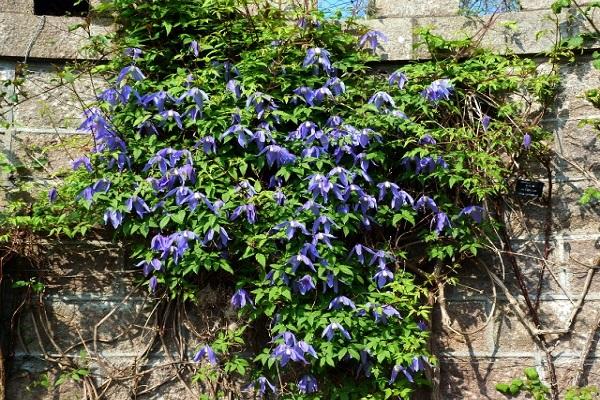
Clematis Florida
Lianas of Florida varieties grow up to 1.5-2 meters. Flowers - large, in the form of a cross or a star. On last year's shoots, flowering begins in May, on young shoots in June, and continues until October when the weather is favorable. On older shoots, most flowers are double and slightly double.
The best varieties are Mrs. Cholmondeli, Jeanne D'Arc, Daniel Deronda, Kid.
Mountain clematis
Mountain clematis has been found in the Himalayas. It is a deciduous liana that blooms in nature in white or pale pink. Cultivated varieties can have different colors - from white to dark pink and lilac.
Mountain clematis can withstand temperatures up to -40 ° with shelter.
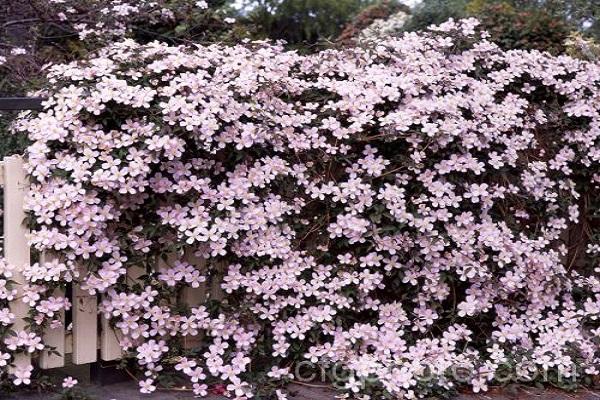
Herbaceous, shrubs and shrubs
One of the characteristics of clematis is the degree of woodiness of the shoots. The appearance of the plant depends on this. Let's consider the main groups.
Herbaceous
These plants are decorative, unpretentious, they grow for a long time in one place. Without support, they quickly cover the entire area with a green-colored carpet. Care is simple - complete pruning at the root.
Clematis straight
The stem grows up to 1.5 meters, does not cling on its own, needs to be tied to a support. It blooms with small, very fragrant white flowers, which smell even stronger in the sun. Pleases with flowering for about a month.

Shrubs
A hard, stiff stem grows up to a meter. It can be shaped to the desired look. Ornamental no less herbaceous. They winter well in the open field, hardy.
Tip: bush species are suitable for flower growers who do not want plants climbing along the walls and do not want to make supports.
Clematis Patens
The Patens group is derived from the natural species Clematis patens. The stem grows up to 3.5 meters. Double flowers are obtained on old shoots, on young ones - simple.
Excellent varieties - Diamantina, Doctor Rappel, Arctic Queen.
Clematis Lanuginoza
The flowers of this group are in the form of crosses, stars or discs. Flowers are solitary, with long legs. Basic color tones are pink or lilac. Liana grows up to 2.5 meters, thin shoots. The flower diameter is 10-20 centimeters.
Varieties - Ballerina, Ball of Flowers, Olympics-80.
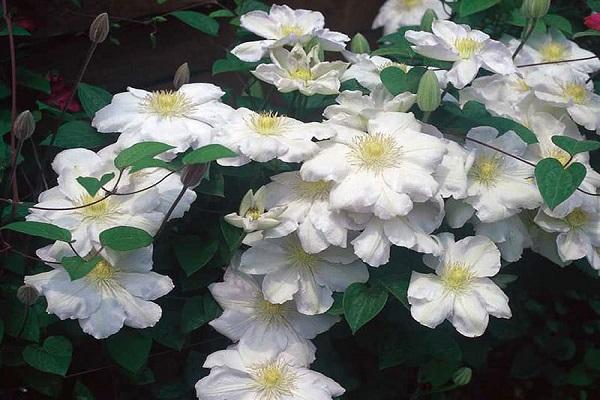
Clematis the Burning
Lianas of this species grow up to 5 meters, have dense dense decorative foliage. The flowers look like small crosses, as they have 4 petals. They bloom very profusely, covering a dense wall of leaves. The flowers smell sweetly of honey and almonds. Very hardy.
Semi-shrubs
Whole-leaved clematis have non-stick vines that grow up to 3 meters. The lower part is woody, herbaceous and requires pruning for the winter. Flowers - half-open and drooping (up to 12 centimeters) in the form of bells.
Varieties - Alyonushka, Aromatic, Sizaya Bird.
Clematis Texas
It grows naturally in southern North America. Semi-shrub or herbaceous species with powerful liana. Flowers resemble tulips with bent petals, thin legs up to 15 centimeters long. Blooms on young shoots.

Clematis of Tangut
Tangut species of clematis have medium-sized flowers (up to 5 centimeters), with tulip-like heads. They have angular stems with a large number of shoots, growing up to 3-6 meters. The foliage is scarce, covered with flowers The main tones in the color of the buds are white and yellow.
Popular varieties are Anita, Bill Mackenzie, Grace, Radar of Love.
Clematis Barshchevikolistny
This species is native to China and Korea. Has decorative foliage - dense, bright, leathery. Inflorescences - a panicle, flowers resemble hyacinths, tones - white-blue-blue. The buds are medium-sized, but in the mass they look beautiful.
Clematis Integrifolia
The whole-leaved species Clematis integrifolia is classified into a separate group. The buds are single or connected by 3, the shape is bell-shaped. Sepals - 4-5, they twist and bend in the process of growth. Best flowering on young shoots, where buds grow up to 12 centimeters.
Vines braid strongly, cling weakly, so they need to be tied. They winter well in cold regions after pruning young shoots.
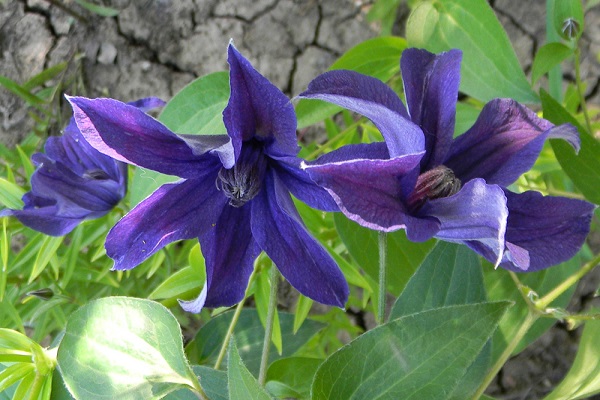
Clematis Brown
This type of clematis came from the Asian region, it grows in the Far East, Kamchatka. The flowers resemble glasses with a ribbed surface, the heads are lowered down. The tips are slightly curved. The size is small - only 4 centimeters.
The name clematis was given for the color of flowers - brown, purple, brown. Sepals pubescent. Bloom - July-August. Liana is long - 4 meters.
Brown clematis grows well in most regions, including Yakutia. Looks spectacular next to conifers, often used in group planting.
How clematis are distinguished by flower size
Clematis is grown in plots for its flowers, which are very diverse. The sizes of flowers vary in a wide range - small (3-5 centimeters), large ones reach 25 centimeters.
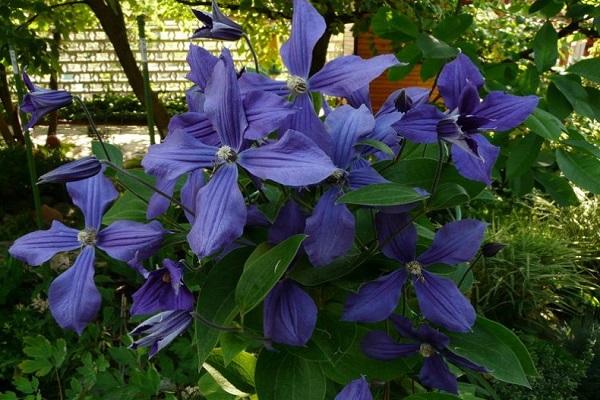
Large-flowered
Large-flowered plants are a real decoration of the garden. Most summer residents tend to choose just such types.
Large-flowered is the main difference between hybrids of the following groups:
- Zhakman. The cups grow up to 12-20 centimeters. The best representatives are Zhakmani, Queen, Luther Burbank (up to 25 centimeters), Blue Flame.
- Florida. Mrs. Cholmondeli has a head up to 12 centimeters, terry.
- Patens. Representatives - Andromeda, President. Single flowers grow up to 22 centimeters, star-shaped.
- Lanuginose. Usually blue and purple tones. Best - Olympics 80, Prince Hendrick.
- Viticella. The cups grow up to 12 centimeters. Representatives - Alexandrite, Ville de Lyon.
Many of these species bloom profusely and for a long time.
Small-flowered
Lomonosov, which have small flowers, usually bloom profusely and for a long time. The bushes are literally covered with buds, which often have an exquisite shape and pleasant aroma.
The avant-garde is distinguished by its multicoloredness, with sepals of a red hue (up to 5 centimeters) and a pink middle. The bright buds completely hide the foliage, making the bush rose red.
Other popular small-flowered clematis are Vitalba, Memm, Midwell Hall.
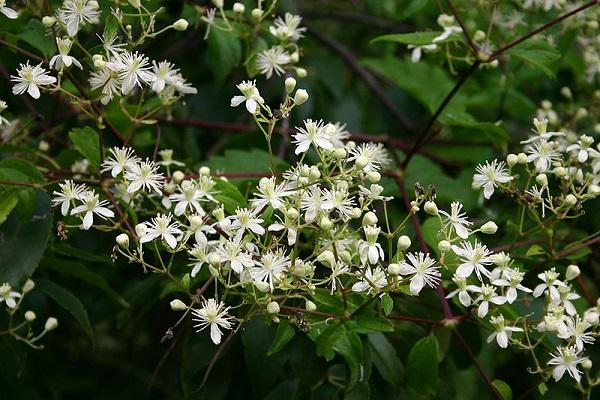
Color variety of clematis varieties
It is more pleasant for simple flower growers to subdivide plants according to the color of the petals. This does not comply with botanical rules, but it is more convenient to select a variety using this method. Lomonosos are distinguished by a wide variety of colors.
The severity of the color and even its tone is influenced by weather conditions, strong or low illumination of the bush. This is especially noticeable on the stripes and strokes on the petals. Some species bloom in one color and end up in another.
White varieties of clematis
The white color of sepals is considered exquisite, elegant bushes in summer remind of spring.
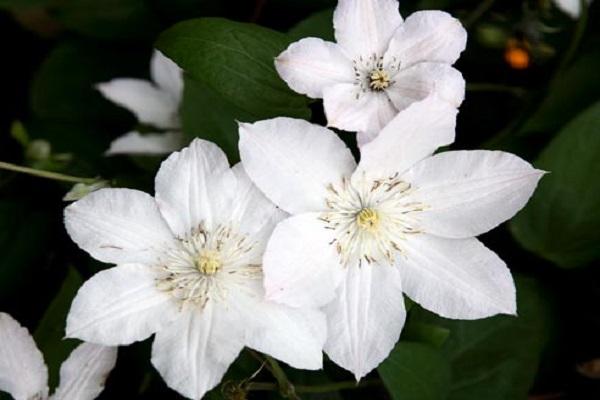
John Paul II variety
The pride of Polish selection is one of the most popular among summer residents. Blooms for a long time (June-September). Snow-white sepals with an indistinct pinkish stripe in the center, brighter in late summer. Anther of red tone.
The plant is resistant, winters well. An excellent decoration for trellises, gazebos due to the long stem, which grows up to 4 meters.
Jeanne D'Arc variety
When Jeanne blooms, she completely hides the greens with the snow-white foam of petals. Diameter - 20 centimeters, pronounced terry (24 petals). Large cups are decorated with yellow anthers. An exquisitely beautiful plant. Braids green bushes, creating a magnificent garden decoration.
Variety Arctic Queen
It blooms with lush white double flowers, yellow anther. Bred in England. In June, flowering on old shoots, by August, the buds bloom on new shoots.
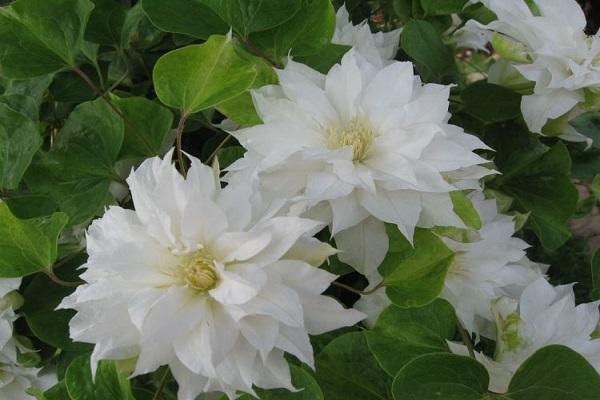
Bella variety
Exquisite flowers, similar to stars (15 centimeters), narrow petals, do not close. Sepals are creamy yellow at first, gradually turning white. The stem is up to 2.5 meters. Not susceptible to fungal infection.
Blue varieties of clematis
The blue colors are expressive, they contrast with the general green background of the summer cottages. Blue also belongs to this group, since the color intensity largely depends on weather conditions, lighting and care. Note also that during the season, the blue color can turn into blue and vice versa.
Blue Light grade
Flowers of this variety are famous for their doubleness, which is observed on shoots of any age. The petals are lavender blue, bright and expressive. The small size of the vines allows you to grow Blue Light in small areas and balconies. Flowers grow up to 15 centimeters, upper sepals are narrow, arrow-shaped.
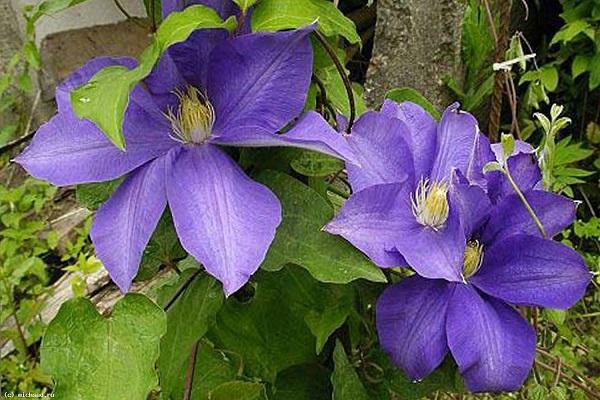
Clematis Durana variety
Clematis sepals have a deep blue color, the diameter of an open flower reaches 12 centimeters. Anthers are yellow-blue. The number of sepals is 4, very rarely up to 6. The bush grows up to 2 meters, the foliage is dense green and juicy.
Variety General Sikorsky
Large flowers of a pronounced blue-violet or lilac color cover the arbors and fences with a continuous blanket. The petals are wide, the whole flower is flat, reaching 20 centimeters in diameter. It blooms twice a season, prefers shady areas without excess sun.
Variety H. F. Young
The size of the flowers reaches 18 centimeters. It blooms twice, in the first wave - with semi-double single flowers, in autumn - with simple flowers. The sepals are blue-blue, the anther is yellow-white.
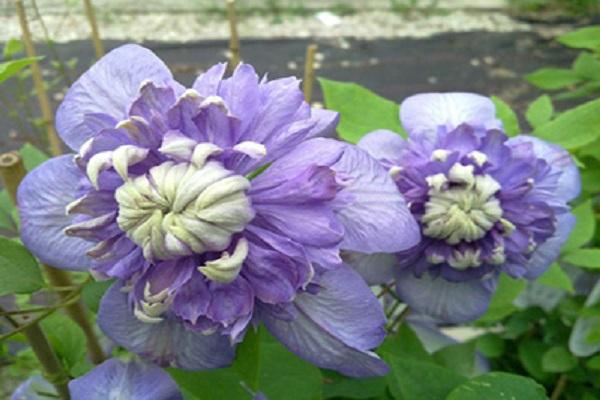
Yellow varieties of clematis
Yellow varieties create a cheerful mood, the buds are visible from any distance and delight the eye.
Variety Gray clematis
The leaves of this clematis are gray. Flowers have a yellow-green hue, sit on a thin stalk, the number of sepals is 4, they are slightly curled outward. Distributed in China and Mongolia, found in the southern part of Siberia. Liana grows up to 5 meters, in the Middle Lane clematis can freeze out.
Raeder variety
Small drooping bells (length - 2 centimeters) of a pale yellow tone are collected in inflorescences. They have a mild pleasant smell. Redera belongs to semi-shrubs, grows up to 3 meters. It blooms well in mild humid climates.
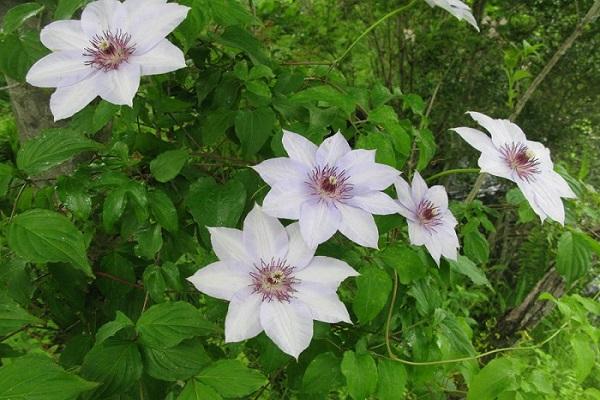
Variety Pilchatolistny
Natural species come from the Far East. In nature, serrate-leaved does not differ in abundant flowering, the shape is bell-shaped, the sepals open up strongly over time, sit on thin pedicels (4-6 centimeters). They have a pointed shape, the inner part is edged. The color is light yellow.
The striking representative of the group is Golden Tiara, with exquisite bright yellow petals and a lilac-yellow center.
Pink varieties of clematis
Pink flowers are loved by all florists, they are cute and delicate.
Josephine variety
Flowers reach 20 centimeters in diameter, strongly double. The lower petals are wider, open. The upper petals are tightly rolled, open in turn. They are narrower than the lower ones, have a brighter strip in the center. Color - lilac pink.
When grown in a shaded area, there are no stripes on the petals. When fully opened, the flower turns into a lush dense pompom of exquisite color.

Variety Madame Baron Vilar
Differs in high winter hardiness, the bush remains viable for a long time. Blooms profusely. The petals are lilac-pink, gradually brighten. The number of sepals is 5-6. Liana stretches up to 3 meters. Clematis blooms from mid-summer on young shoots.
Variety Pink Fantasy
A beautiful variety with flowers of a delicate pink shade. There is a darker stroke along the petals, cherry stamens set off the pink petals. It blooms with a lot of flowers. Can be grown in flowerpots. The stem grows up to 3 meters.
Flowering time is July-September.
Asao variety
The Japanese variety was introduced to the market in 1971. The flowers are weakly double, of a pronounced pink color (some consider it red), the middle of the petals is less colored. The stamens are thin and yellow.
When grown in bright sun, they lose their decorative effect and quickly crumble, it is better to keep in partial shade. They quickly twine around vertical supports - trees, bushes. Stem - up to 3 meters. Often grown in containers.

Shade-tolerant varieties of clematis
Many species and varieties of clematis grow well in shade conditions, do not need bright sun. Some, falling into bright light, crumble and lose their decorative effect. They are grown under trees, near fences.
Clematis Vanguard
Clematis has a cheerful festive look - the lower sepals are bright red, the upper ones form a separate flower of a light pink hue. The flower is terry and dense, with a diameter of 10 centimeters. There are many buds, they are bright and noticeable. Liana - 2.5 meters.
Flowering lasts all summer.
Clematis Anastasia Anisimova
Clematis blooms on the shoots of the current year with open flowers with 4-7 sepals. Color - light blue, lighter towards the middle, anthers refresh the flower with a yellow tint. Petals with shine, by the end of flowering bend outward. Clematis of this variety can be classified as shade-loving; it does not require constant illumination for abundant flowering.
Blooms in June, then new buds appear in late summer.
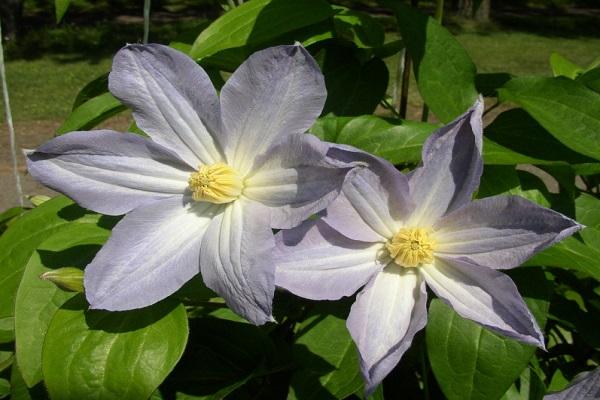
Clematis Ballerina
The exposed white clematis flowers look like a ballet tutu. The number of sepals is 5-8. In the center are dark gray-cherry anthers. The variety has been known since 1967, popular with clematis lovers. Blooms in June, on last year's shoots, again on young ones - August, September.
Clematis Gypsy Queen
Wonderful clematis Gipsy Queen do not lose their color brightness during long flowering, remain purple-violet. The surface of the sepals is velvety. The shoot gives up to 20 buds. Flowering continues until frost.
One of the oldest and most popular clematis varieties from the Jacquemann class.
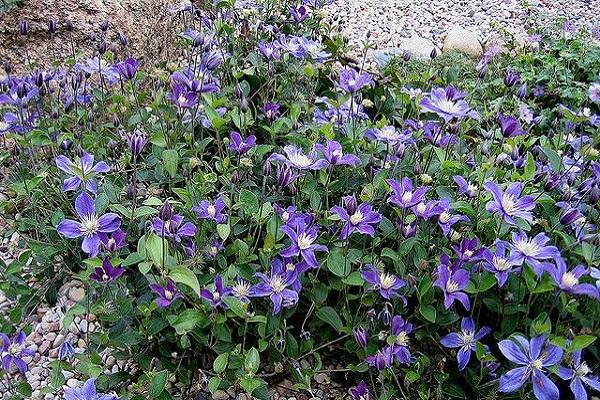
Clematis varieties blooming all summer
Many species and hybrids of clematis delight summer residents with constant flowering during the summer.For some, there is some gap between early and late dates. Early double flowers by the end of the season can be replaced by simple ones with one row of sepals.
Arabella
Frost-hardy Arabella bloom all summer and the warm part of autumn. Soft stems without a garter spread beautifully along the ground, occupying the entire area. The flowers are distinguished by a wonderful bright blue or blue-violet hue. There are many buds, they completely cover the foliage with a blue carpet. Arabella looks good when braiding green bushes of other plants.

General Sikorski
The wide sepals of this variety are together similar to a saucer, have a rich purple-lilac color and expressive yellow anthers. The dense stem is heavy, clematis can damage nearby plants if not attached well.
They grow well in partial shade, bloom in June and bloom until mid-autumn.
Romantika
The sepals of the Romance variety are dark purple, in the shade the flowers look black. A bright yellow anther refreshes the petals. Refers to long-flowering varieties, for which flower growers love it. The stem length is 2.5 meters. It curls well, therefore it is used for vertical cultivation.
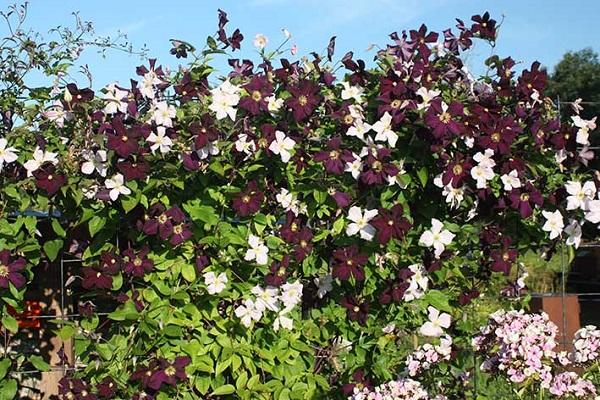
Clematis is an excellent choice for garden plots. Bright bushes adorn the area with abundant flowering throughout the season. Unpretentious plants survive harsh Russian winters well. Many hybrids do not require bright sun and bloom beautifully in partial shade.
Having mastered the rules of pruning and forming a bush, growers get an exquisitely beautiful plant that becomes a real decoration of a garden, balcony or apartment.
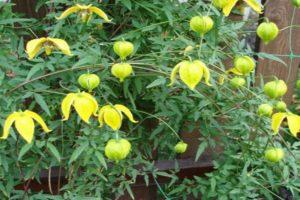
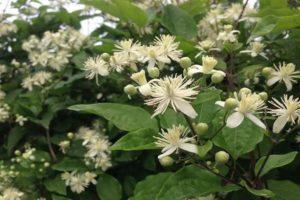
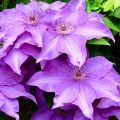
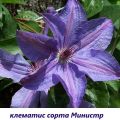


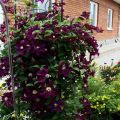

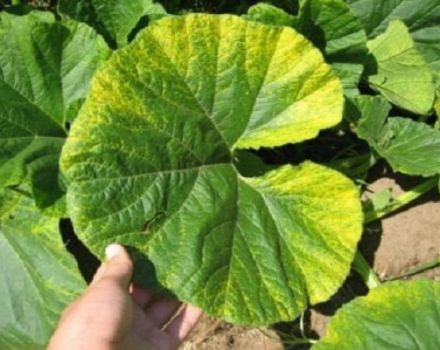
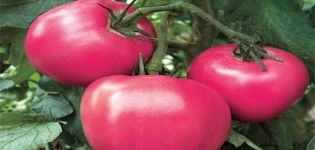
Horses and people are confused! From everywhere, little by little, and it turned out porridge-malasha.
Good day!
It is good that you honor the classics and easily quote the works of Lermontov. Probably, in addition to respecting the work of the famous poet, one should also treat with understanding the work of those who fill the site with content. Our team employs professionals who have been engaged in agricultural technology for more than one year. If you want to offer something, please, be constructive.